Confused about the best coffee for pour over? You’re not alone – I’ve been there too, testing myriad beans to discover that perfect cup. In this blog post, we’ll unravel the mystery by delving into everything from types of beans and their origins to grind size and brewing tips.
Ready for a journey into the world of pour-over coffee?
Key Takeaways
- Medium roast beans like Ethiopian Yirgacheffe, Kenya Peaberry, and Burundi Kavugangoma are great choices for pour-over coffee.
- Factors to consider when choosing coffee beans include origin, processing method, grind size, and roast level.
- Top picks for the best coffee beans for pour over brewing are Verve Seabright, Blue Bottle, Mt. Comfort – Peruvian blend, Ernesto’s House Roast by Nossa Familia Coffee, and Partners Coffee – Colombia El Ramo.
- Other factors to consider are whether you prefer whole bean or ground coffee and your personal taste preferences.
Types of Coffee Beans for Pour Over
For pour over coffee, there are several types of coffee beans that work well. Medium roast beans like Ethiopian Yirgacheffe, Kenya Peaberry, and Burundi Kavugangoma are great choices for a flavorful and balanced cup of pour over coffee.
Medium roast beans
Medium roast beans are loved by many coffee fans. They are just right for making pour-over coffee. These beans are not too dark or too light. People like them because they bring out the best flavors in your cup of coffee.
Brands like Kicking Horse and Lavazza Super Crema make great medium roast beans. You will love the taste of pour-over coffee made with these beans!
Ethiopian Yirgacheffe
Ethiopian Yirgacheffe is a top pick for pour over coffee. It’s seen as one of the world’s best coffee beans. These beans grow in high places and good soil. This helps their quality.
Fans love its unique, wine-like taste. The lightly-roasted beans have an intense flavor that makes it stand out from other types of coffee. If you want a rich cup of pour-over coffee, try Ethiopian Yirgacheffe!
Kenya Peaberry
Kenya Peaberry is a special kind of coffee bean. It comes from Kenya and people who love coffee like it a lot. What makes it different? Well, most coffee beans are two seeds inside one fruit.
But the peaberry is not like that. It starts off as two seeds but then they join into one seed while still in the fruit! This makes for a unique kind of bean with its own shape. The taste is also very good – smooth, rich and well-balanced.
So, consider Kenya Peaberry if you want to try something new with your pour-over coffee!
Burundi Kavugangoma
Burundi Kavugangoma is a type of coffee bean that is perfect for pour over brewing. It comes from Burundi, a country known for producing high-quality coffee beans. The Kavugangoma variety has a clean and delicate flavor with rich body and acidity.
These beans are highly regarded and have a fine quality. When brewed using the pour over method, Burundi Kavugangoma coffee beans showcase their floral and fruity tasting notes, making every cup of pour over coffee flavorful and enjoyable for any coffee enthusiast.
Factors to Consider When Choosing Coffee Beans
When choosing coffee beans for pour over, consider factors like origin, processing method, grind size, and roast level. Read on to discover how these factors can impact your coffee brewing experience.
Origin
When it comes to pour-over coffee, the origin of the beans is really important. You see, coffee is grown in different parts of the world, and where it’s from affects how it tastes.
Each region has its own unique characteristics that influence the flavor profile of your brew. Single origin beans are grown in one specific place, which means they have a distinct taste and you can trace their journey back to that location.
So whether you prefer a bright and fruity Ethiopian roast or a bold and earthy Colombian blend, knowing the origin of your coffee beans can help you find that perfect cup of pour-over goodness!
Processing method
The way coffee beans are processed can have a big impact on the flavor of your coffee. There are different methods, but one common one is called the “wet” process or washing. This involves removing impurities from the coffee cherries a few days after they’ve been picked.
The cherries are soaked in water to ferment, and then the outer layer is removed before drying the beans. Another method is called “dry” processing or natural processing, where the whole cherry is dried before removing the outer layer.
Each method gives the beans a unique taste profile.
Grind size
Grind size is an important factor when making pour over coffee. It can greatly affect the taste of your brew. Different brewing methods require different grind sizes for the best results.
For pour over, a medium-fine grind size is usually recommended. If the beans are ground too finely, it can lead to over-extraction and make your coffee taste bitter. On the other hand, if the beans are ground too coarsely, it can result in under-extraction and leave you with a weak flavor.
So finding the right grind size is key to brewing a flavorful cup of pour over coffee.
Roast level
The roast level of coffee beans plays a big role in how your cup of pour-over coffee tastes. When roasting coffee beans, they go through different stages that affect their flavor and aroma.
Medium roast coffee beans are a popular choice for pour-over because they have a balanced taste and retain more of the bean’s natural flavors. On the other hand, dark roast beans have a bolder flavor with notes of chocolate or caramel, but may also be more bitter.
Light roast beans are milder with fruity or floral undertones. Whichever roast level you prefer, it’s important to find one that suits your taste preferences and brew method. So when choosing your coffee beans for pour-over, consider the roast level as it can greatly impact the overall enjoyment of your cuppa!
Top Picks for Best Coffee Beans for Pour Over
Here are my top picks for the best coffee beans to use for pour over brewing: Verve Seabright, Blue Bottle, Mt. Comfort, Ernesto’s House Roast – Nossa Familia, and Partners Coffee – Colombia El Ramo.
Verve Seabright
One of the top picks for best coffee beans for pour-over brewing is Verve Seabright. The Seabright House Blend has a classically sweet and inviting flavor, with notes of apricot and honeydew.
It has a balanced acidity, a fudge-like body, and aromas of sweet, toasted flavors. This blend also offers a creamy body with nutty undertones and a faint hint of apple. It’s perfect for enjoying a delicious cup of pour-over coffee whether you’re at home or camping.
So grab your coffee grinder, get your pour-over set up ready, and brew yourself some flavorful goodness with Verve Seabright!
Blue Bottle
Blue Bottle is a coffee company founded in 2002 by James Freeman. They are known for their pour-over coffee, where they brew each cup individually. Blue Bottle offers a well-balanced blend of coffee beans specially selected for pour-over brewing.
Blue Bottle stands out because they roast every bag to order, ensuring the freshest beans possible. They even taste-test each batch of coffee to ensure it meets their high standards of freshness, flavor, and quality.
If you’re looking for convenience and top-quality beans for your pour-over coffee at home, Blue Bottle is definitely worth considering.
Mt. Comfort
One of the best coffee beans for pour-over brewing is Mt. Comfort. It’s a Peruvian blend that offers a unique and enjoyable flavor for pour-over coffee lovers. To make a delicious cup of pour-over coffee with Mt.
Comfort, you can add 1 to 2 tablespoons of ground coffee per 8 fluid ounces of water. Many coffee enthusiasts recommend Mt. Comfort as one of the top options for pour-over brewing in 2023.
So if you’re looking to enhance your pour-over experience, give Mt. Comfort a try!
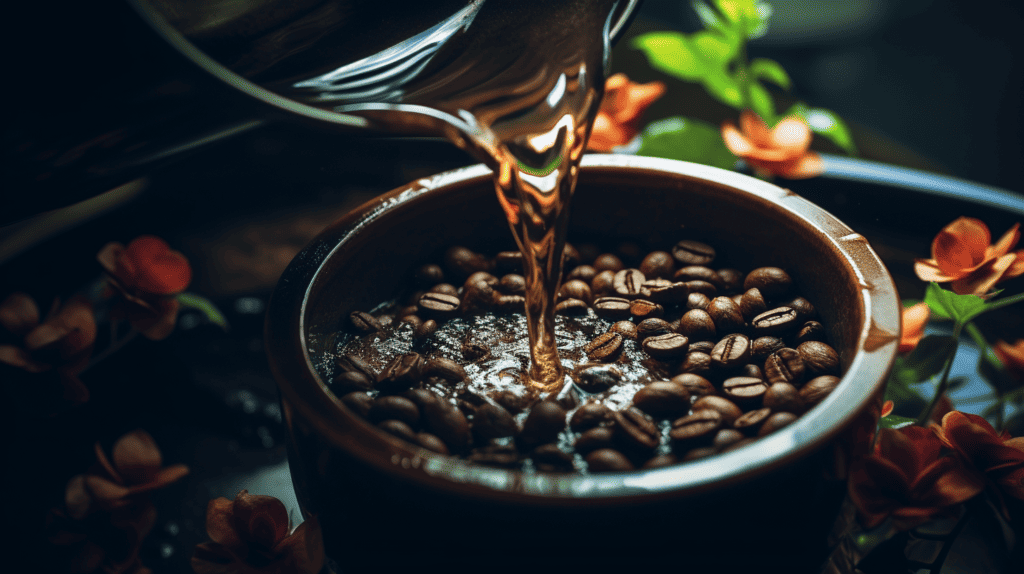
Ernesto’s House Roast – Nossa Familia
Ernesto’s House Roast, offered by Nossa Familia, is a great choice for pour-over brewing. It is a medium roast coffee that can be enjoyed as both espresso and drip coffee. The beans are roasted daily in Portland, Oregon, ensuring freshness when they are shipped to customers.
Nossa Familia sources their coffees from countries like Brazil, Guatemala, Peru, Nicaragua, and more. Ernesto’s House Roast has been recognized as one of the top picks for best coffee beans for pour-over brewing.
With its direct trade specialty coffee and commitment to quality, Nossa Familia offers a delicious option for your pour-over coffee needs.
Partners Coffee – Colombia El Ramo
Partners Coffee’s Colombia El Ramo is one of the top picks for the best coffee beans for pour-over brewing. It comes from Colombia, specifically from the towns of Caicedo and Urrao.
This single-origin coffee offers a delicious flavor profile with hints of juicy peach, sweet cream, and vanilla bean. What makes this coffee special is its exceptional sweetness and its ability to showcase the natural flavors of Colombian coffee beans.
Partners Coffee is dedicated to highlighting the unique tastes of different coffee origins through their Colombia El Ramo blend.
Other Factors to Consider
When choosing the best coffee beans for pour over, you should also consider whether you prefer whole bean or ground coffee, single origin or blend, and your personal taste preferences.
Single origin vs. blend
Single origin coffees come from a specific region and often have unique flavors like strawberry or jasmine. They are considered to be more distinct and high-quality. On the other hand, blends combine beans from different places, offering a balanced taste.
Blends usually need a tighter water-to-coffee ratio compared to single origins. Historically, people thought blends were lower in quality, but that’s not always true. Both single origins and blends can be delicious – it just depends on your preference!
Taste preferences
When it comes to taste preferences for pour-over coffee, personal preference is key. Everyone has different tastes and what they enjoy in their cup of coffee. Some people prefer a more acidic and bright flavor, while others enjoy a richer and bolder taste.
It’s all about finding the balance that suits your palate. The pour-over method can really bring out the flavors of the coffee, allowing you to appreciate its unique characteristics.
Whether you like a certain level of acidity, bitterness, or sweetness in your brew, it’s important to experiment with different beans and roasts until you find what works best for your taste buds.
How to Make Pour Over Coffee
Brewing pour over coffee is simple and rewarding. Learn the step-by-step process to make a perfect cup of pour over coffee at home.
Equipment needed
To make a delicious pour over coffee at home, you’ll need a few important pieces of equipment. First, invest in a good burr grinder to grind your coffee beans to the right coarseness.
This will help ensure consistent flavor extraction. Next, you’ll need a gooseneck kettle for precise pouring and control over water flow. A scale is also helpful for measuring the perfect coffee-to-water ratio.
Finally, don’t forget to use high-quality coffee beans for the best taste experience. These key pieces of equipment will elevate your pour over brewing process and create an amazing cup of joe every time.
Step-by-step brewing process
Here’s how I make pour over coffee:
- Place the filter in the brewer and rinse it with hot water. This helps remove any paper taste and preheats the equipment.
- Add your desired amount of freshly ground coffee to the filter. Use a medium grind size for pour over brewing.
- Start a timer to keep track of the brewing time. This will help you achieve consistency in your coffee.
- Pour about 10 – 15% of the total water needed onto the coffee grounds, making sure to wet all of them evenly. This is called the bloom stage and allows the coffee to release gases and flavors.
- After a short pause, continue pouring hot water in a slow, circular motion over the grounds until you’ve reached your desired water-to-coffee ratio.
- Allow the water to pass through the grounds and into your carafe or mug below. Keep pouring slowly and steadily, maintaining a consistent flow rate.
- Once all the water has passed through, remove the filter and discard it with the used grounds.
- Serve your freshly brewed pour over coffee right away and enjoy!
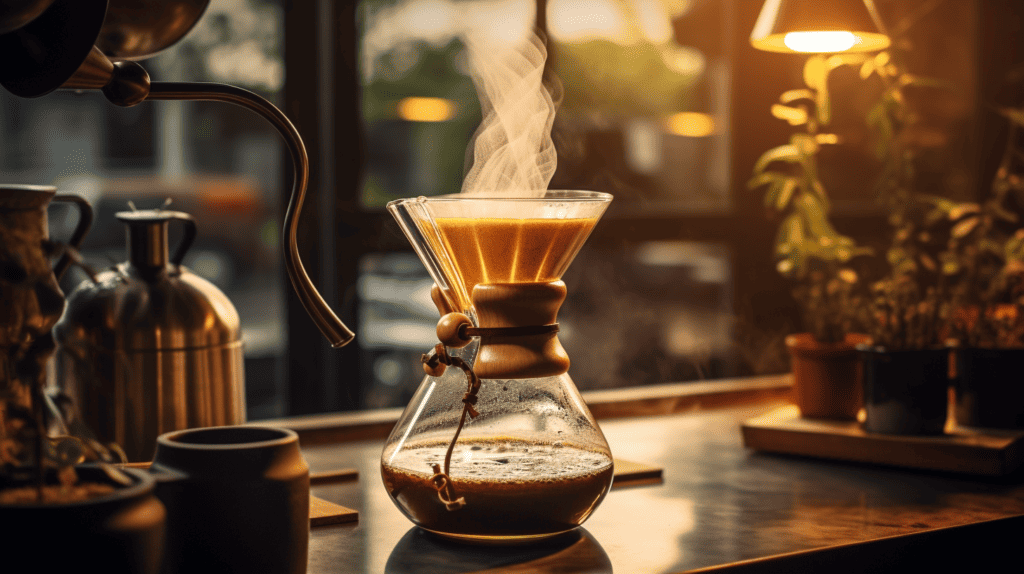
Tips for Brewing the Best Pour Over Coffee
To brew the best pour over coffee, pay attention to water temperature, brewing time, pouring technique, and the proper coffee-to-water ratio. These tips will help you achieve a flavorful cup that brings out the best in your chosen beans.
Keep reading to learn more!
Water temperature
Achieving the right water temperature is crucial for making a great cup of pour over coffee. The optimal range is between 195°F and 205°F (90°C to 96°C). This temperature helps with proper extraction and flavor development.
If the water is too hot or too cold, it can affect how the coffee tastes. To get the best results, aim for a water temperature within this range when brewing your pour over coffee.
Brewing time
When making pour over coffee, the brewing time is an important factor to consider. Most pourover brewing has a sweet spot around three to four minutes. It’s crucial to establish a consistent brew time because it allows you to rely on grind size for optimal results.
The total brew time for pour over coffee should be around 3:30, with the brew finishing between 3:15 and 3:45. This timing ensures that you extract the desired flavors from the coffee beans without over-extracting them, resulting in a balanced and delicious cup of coffee.
Remember, the pour over method involves pouring hot water through coffee grounds in a filter, so getting the brewing time right is key to achieving the perfect cup of pour-over coffee.
Pouring technique
Pouring technique is a crucial aspect of making pour-over coffee. To achieve the best results, it’s important to pour the hot water in a steady and slow stream over the coffee grounds.
This allows for consistent and efficient extraction of flavors from the beans. You want to aim for a circular motion while pouring, starting from the center and moving outward towards the edges of the coffee bed.
This ensures that all the grounds are evenly saturated and helps extract a well-balanced flavor profile. Remember, mastering pouring technique takes practice, so keep experimenting until you find what works best for you!
Proper coffee-to-water ratio
When brewing pour over coffee, it’s important to use the proper coffee-to-water ratio. This determines the strength and flavor of your coffee. The recommended ratio is between 1:14 and 1:20, or one to two tablespoons of ground coffee for every six ounces of water.
For regular pour over coffee, a ratio of 1:15 (66g/1 liter) is suggested. If you prefer a stronger cup, you can try a ratio of 1:14 (71g/1 liter) for French press style brewing.
Conclusion and final thoughts 💭
When it comes to making the best pour-over coffee, choosing the right type of coffee beans is key. Single-origin beans with bright flavors work best for this brewing method.
Don’t forget to bloom your coffee grounds and use a medium-coarse grind size. The right water temperature and pouring technique are also important factors. Remember, practice makes perfect, so keep experimenting until you find your perfect cup of pour-over coffee!
Additional Resources and Recommendations on Best Coffee For Pour Over
Here are some additional resources and recommendations for you to explore as a coffee enthusiast:
– Coffee Blogs: Check out popular coffee blogs like Sprudge, Daily Coffee News, and Perfect Daily Grind for more in-depth articles, brewing guides, and industry news.
– Online Communities: Join online forums and communities like r/coffee on Reddit or Home-Barista.com to connect with fellow coffee lovers, ask questions, and share your experiences.
– Specialty Coffee Shops: Visit local specialty coffee shops in your area that focus on pour over brewing. They often have knowledgeable staff who can recommend different beans, brewing methods, and equipment.
– Barista Courses: Consider taking barista courses or workshops to learn more about the art of making pour over coffee. Many specialty coffee shops or training centers offer these classes for enthusiasts at various skill levels.
– Equipment Upgrades: Invest in high-quality pour over equipment such as a gooseneck kettle with precise temperature control, a quality burr grinder for consistent grind sizes, and a reliable scale for accurate measurements.
Remember to experiment with different beans from various regions and roasters. Taste is subjective, so trust your palate to find the flavors you enjoy the most. Enjoy your journey into the world of pour over coffee!
FAQs on Best Coffee For Pour Over
Q: What is pour-over coffee?
A: Pour-over coffee is a brewing method where hot water is poured over coffee grounds in a slow and controlled manner, allowing the water to extract the flavors and aromas from the beans as it drips through.
Q: What are the best coffee beans for pour-over?
A: The best coffee beans for pour-over brewing are those that are freshly roasted, have a medium grind size, and are known for their flavor profiles. Some popular choices include Ethiopian coffee, Colombian coffee, and Costa Rican coffee.
Q: How do I choose the best coffee beans for pour-over?
A: When choosing coffee beans for pour-over, consider your personal taste preferences. Look for beans that are freshly roasted, have a medium grind size suitable for pour-over brewing, and are known for their flavor profiles. You can also consider trying different origins and roast levels to find your favorite.
Q: What is the ideal grind size for pour-over coffee?
A: The ideal grind size for pour-over coffee is medium. This allows for a balance between extraction and flow rate, resulting in a flavorful cup of coffee without over or under extracting the flavors from the beans.
Q: Can I use any type of coffee for pour-over brewing?
A: Yes, you can use any type of coffee for pour-over brewing. However, it is recommended to use freshly roasted coffee beans with a medium grind size to ensure optimal flavor extraction.
Q: How much coffee should I use for pour-over brewing?
A: The general ratio of coffee to water for pour-over brewing is 1:15. This means for every gram of coffee, you should use 15 grams of water. However, you can adjust this ratio based on your personal taste preferences.
Q: What are some popular coffee beans for pour-over brewing?
A: Some popular coffee beans for pour-over brewing include Ethiopian coffee, Colombian coffee, Costa Rican coffee, and San Francisco Bay coffee. These beans are known for their flavor profiles and are often favored by coffee enthusiasts.
Q: Can I use a drip coffee maker for pour-over brewing?
A: Yes, you can use a drip coffee maker for pour-over brewing. Simply adjust the grind size to medium, use freshly roasted coffee beans, and pour the water over the grounds in a slow and controlled manner.
Q: What is the best way to make pour-over coffee?
A: The best way to make pour-over coffee is to start with freshly roasted coffee beans, use a medium grind size, pre-wet the paper filter, pour the water over the grounds in a slow and circular motion, and let the coffee drip through the filter into your cup. Experiment with different coffee beans and ratios to find your preferred taste.
Q: What are some tips for brewing a perfect cup of pour-over coffee?
A: Some tips for brewing a perfect cup of pour-over coffee include using freshly roasted coffee beans, ensuring a medium grind size, pre-wetting the paper filter, pouring the water in a slow and controlled manner, and adjusting the coffee-to-water ratio to suit your taste preferences. Additionally, experimenting with different origins and roast levels can help you discover your favorite flavor profiles.

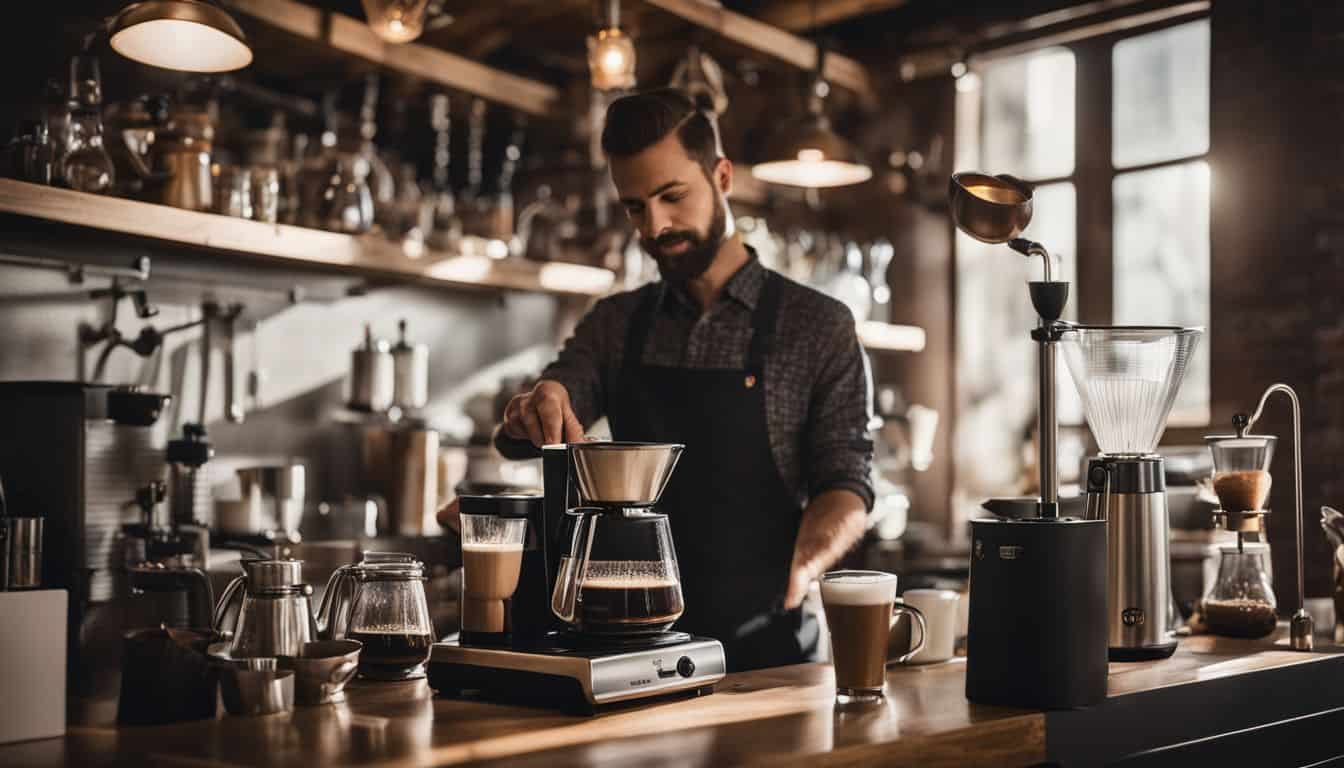
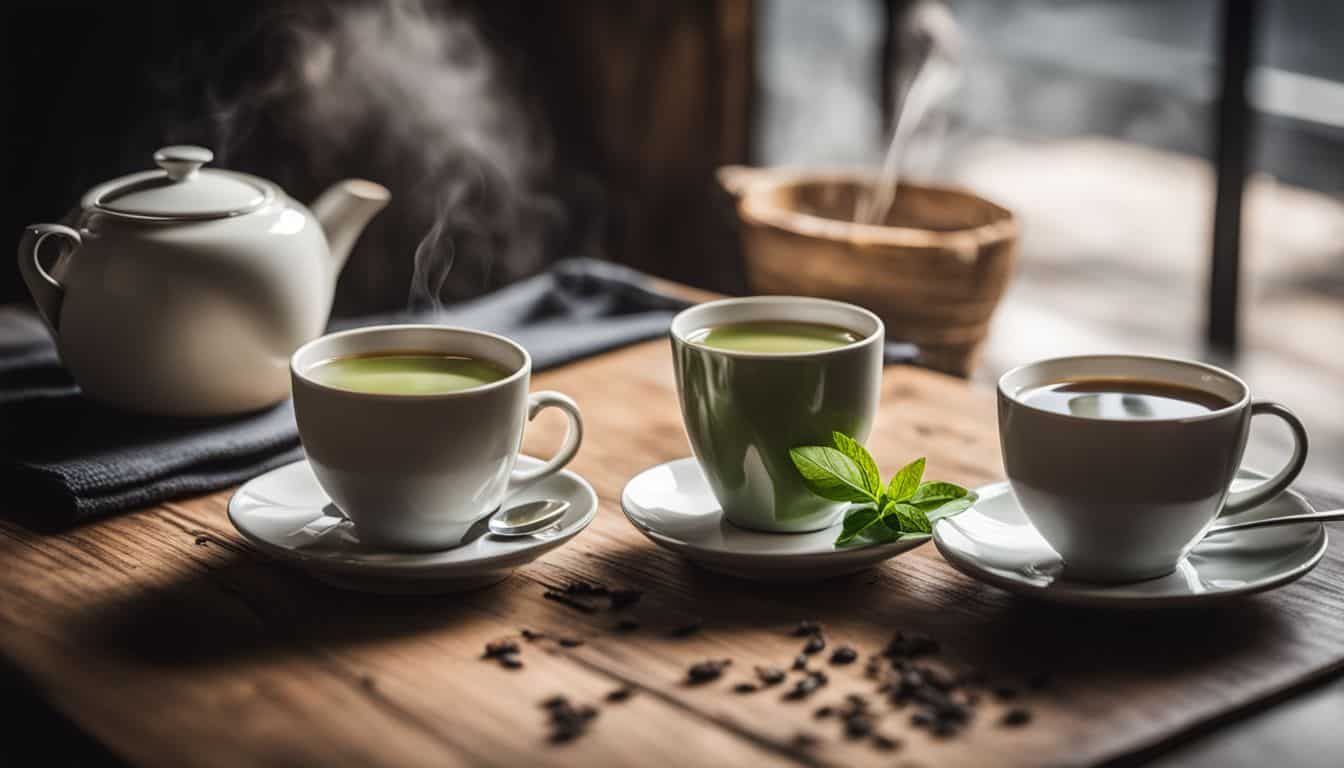

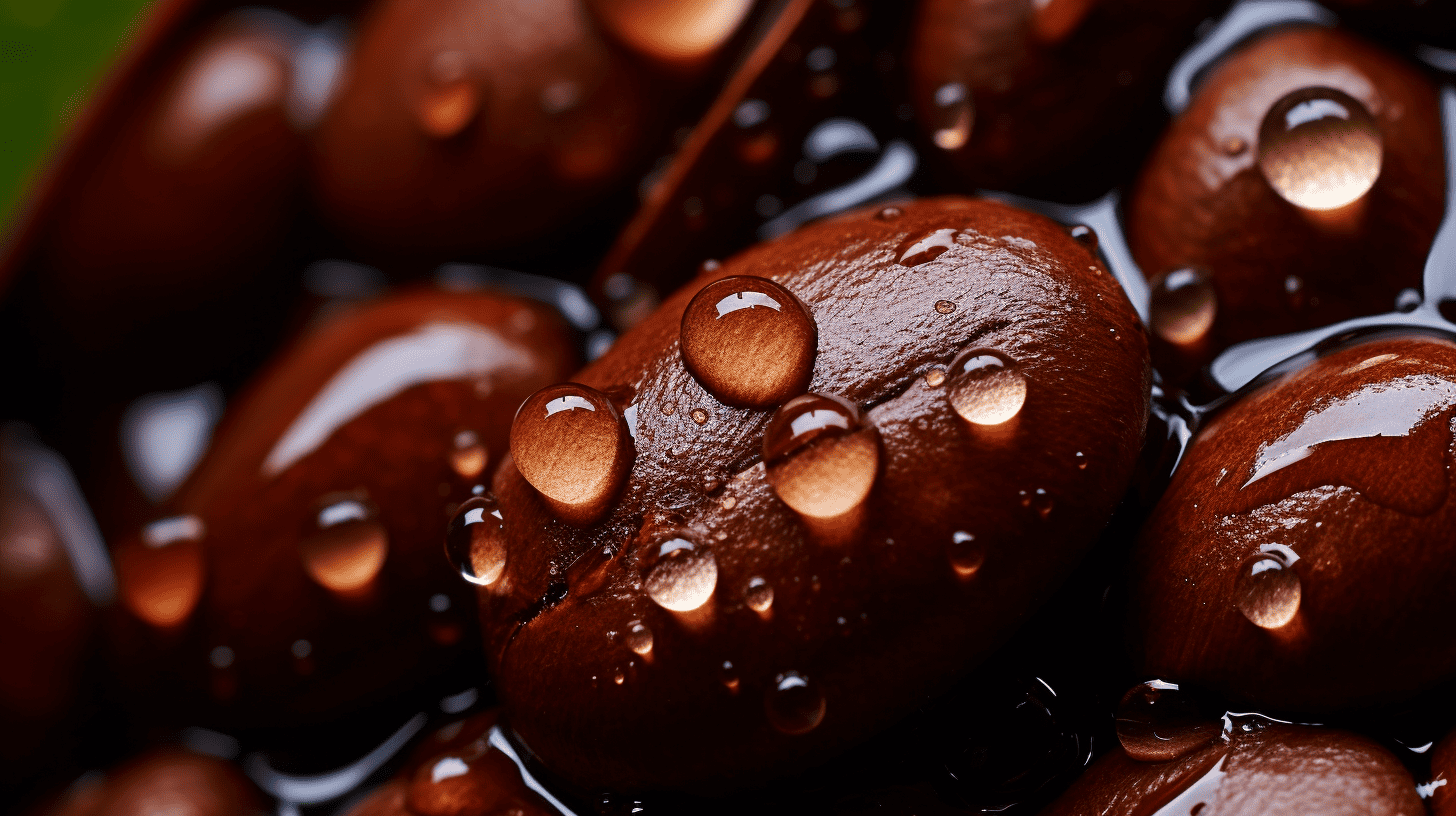
Leave a Reply